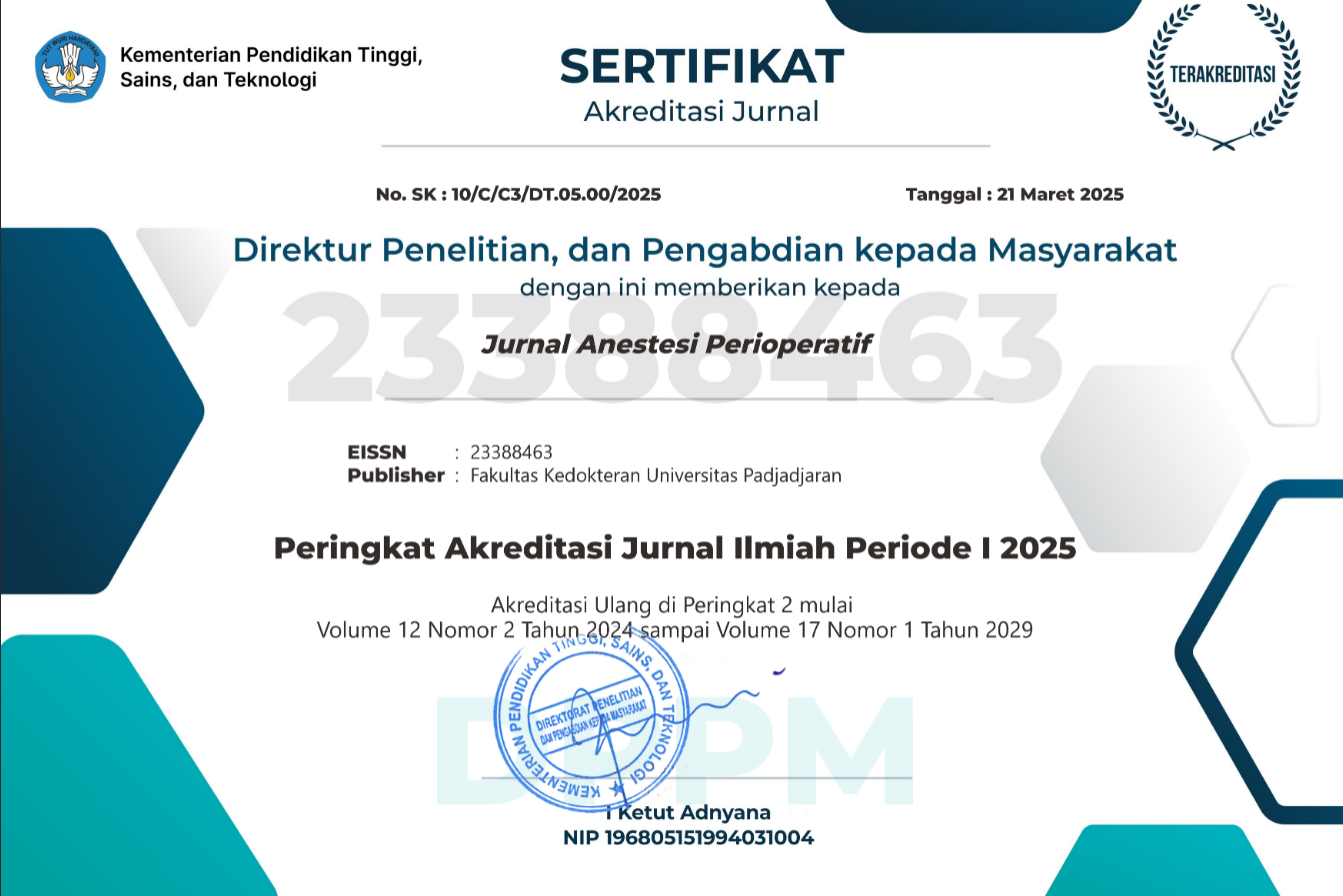Pola Bakteri dari Jam Tangan dan Kacamata yang Dibawa ke Instalasi Bedah Sentral Rumah Sakit Umum Daerah Dr. Moewardi Surakarta
Abstract
Ruang bedah berperan sebagai penyebab infeksi nosokomial terutama akibat luka bedah. Transmisi patogen oleh tenaga kesehatan berperan penting dalam rute infeksi silang. Penelitian ini bertujuan mengetahui pola bakteri jam tangan dan kacamata tenaga kesehatan yang dibawa ke kamar operasi di Rumah Sakit Dr. Moewardi Surakarta. Penelitian menggnakan metode kuantitatif dengan pendekatan deskriptif laboratorik di Instalasi Bedah Sentral RSUD Dr. Moewardi Surakarta pada Juni–Juli 2018. Sampel adalah seluruh hardware yang dibawa masuk ke ruang bedah umum dan memenuhi kriteria inklusi. Hasil penelitian terhadap 40 hardware, yaitu 19 jam tangan dan 21 kacamata yang dipakai dan dibawa ke kamar operasi Instalasi Bedah Sentral RSUD Dr. Moewardi Surakarta. Hardware yang dibawa dan mengandung bakteri patogen sebanyak 33 hardware (83%). Hardware yang terkontaminasi patogen paling banyak adalah kacamata. Jenis bakteri yang paling banyak ditemukan adalah Staphylococcus hominis sebanyak 16 hardware (40%). Staphylococcus haemolyticus ditemukan pada 7 hardware (17%). Staphylococcus epidermidis ditemukan pada 4 hardware (10%). Simpulan penelitian ini adalah hardware yang diteliti mayoritas terdapat patogen (83%).Jenis bakteri yang paling banyak ditemukan adalah staphylococcus hominis pada 40% hardware.
Keywords
Full Text:
PDFReferences
- Esfahani BN, Basiri R, Mirhosseini SMM, Moghim S, Dolatkhah S. Nosocomial infections in intensive care unit: pattern of antibiotic-resistance in Iranian community. Adv Biomed Res. 2017;6:54.
- Singh P, Potlia I, Malhotra S, Dubey H, Chauhan H. Hand sanitizer an alternative to hand washing-a review of literature. J Adv Oral Res. 2020;11(2):137–42.
- Kampf G, Ostermeyer C. Efficacy of alcohol-based gels comparated with simple hand wash and hygienic hand disinfection. J Hosp Infect. 2004;56:131–53.
- Prasad A, Ng Chok H, Wilkes L. Hand hygiene practices amongst patients. Int J Infect Control. 2017;13(2):1–8.
- Higgs A, McGrath BA, Goddard C, Rangasami J, Suntharalingam G, Gale R, dkk. Guidelines for the management of tracheal intubation in critically ill adults. Br J Anaesth. 2018;120(2):323–52.
- Yuwono. Mekanisme molekuler resistensi methicillin resistant Staphylococcus aureus (MRSA). Syifa Medika. 2013;10(2): 1–7.
- Mehta Y, Gupta A, Todi S, Myatra SN, Samaddar DP, Patil V, dkk. Guidelines for prevention of hospital acquired infections. Indian J Crit Care Med. 2014;18(3):149–63.
- Mohapatra S. Sterilization and disinfection. Essentials Neuroanesthesia. 2017:929–44.
- Jenks PJ, Laurent M, McQuarry S, Watkins R. Clinical and economic burden of surgicalsite infections (SSI) and predicted financial consequences of elimination of SSI from an english hospital. J Hosp Infect. 2014;86(1):24–33.
- Szultka-Młyńska M, Janiszewska D, Pomastowski P, Złoch M, Kupczyk W, Buszewski B. Identification of bacteria associated with post-operative wounds of patients with the use of matrix-assisted laser desorption/ionization time-of-flight mass spectrometry approach. Molecules. 2021;26(16):1–24.
- Locke T, Sally K, Andrew W, Rory M. Microbiol Infecti Dis. 2013;23(43):2–30.
- Cristina ML, Sartini M, Schinca E, Ottria G, Spagnolo AM. Operating room environment and surgical site infections in arthroplasty procedures. J Prev Med Hyg. 2016;57(3):E142–8.
- Mahmutoglu D, Munoz-Price LS. Bacterial contamination of the anesthesia work area: hands, patients, and things. Dalam: Bearman G, Munoz-Price S, Morgan D, Murthy, R, penyunting. Infection prrevention. Berlin: Springer;2018. hlm. 29–34.
- Dewi AK. Isolasi, identifikasi dan uji sensitivitas Staphylococcis aureus terhadap amoxicillin dari sampel satu kambing peranakan ettawa (PE) penderita mastitis di wilayah Grimulyo, Kulonprogo, Yogyakarta. JSV. 2013;31(2):138–50.
- Mendoza-Olazarán S, Morfin-Otero R, Rodríguez-Noriega E, Llaca-Díaz J, Flores-Treviño S, González-González GM, dkk. Microbiological and molecular characterization of Staphylococcus hominis isolates from blood. PLoS One. 2013;8(4):e61161.
- Ghosh S, Banerjee M. Methicillin resistance & inducible clindamycin resistance in Staphylococcus aureus. Indian J Med Res. 2016;143:362–4.
- Argemi X, Hansmann Y, Prola K, Prévost G. Coagulase-negative Staphylococci pathogenomics. Int J Mol Sci. 2019;20(5): 1215.
- Barros EM, Lemos M, Souto-Padrón T, Giambiagi-deMarval M. Phenotypic and genotypic characterization of biofilm formation in Staphylococcus haemolyticus. Curr Microbiol. 2015;70(6):829–34.
- Ahmed NH, Baruah FK, Grover RK. Staphylococcus hominis subsp. novobiosepticus, an emerging multidrug-resistant bacterium, as a causative agent of septicaemia in cancer patients. Indian J Med Res. 2017;146(3):420–5.
DOI: https://doi.org/10.15851/jap.v11n1.2490
Article Metrics
Abstract view : 833 timesPDF - 505 times
This Journal indexed by

JAP is licensed under a Creative Commons Attribution-NonCommercial 4.0 International License
View My Stats



